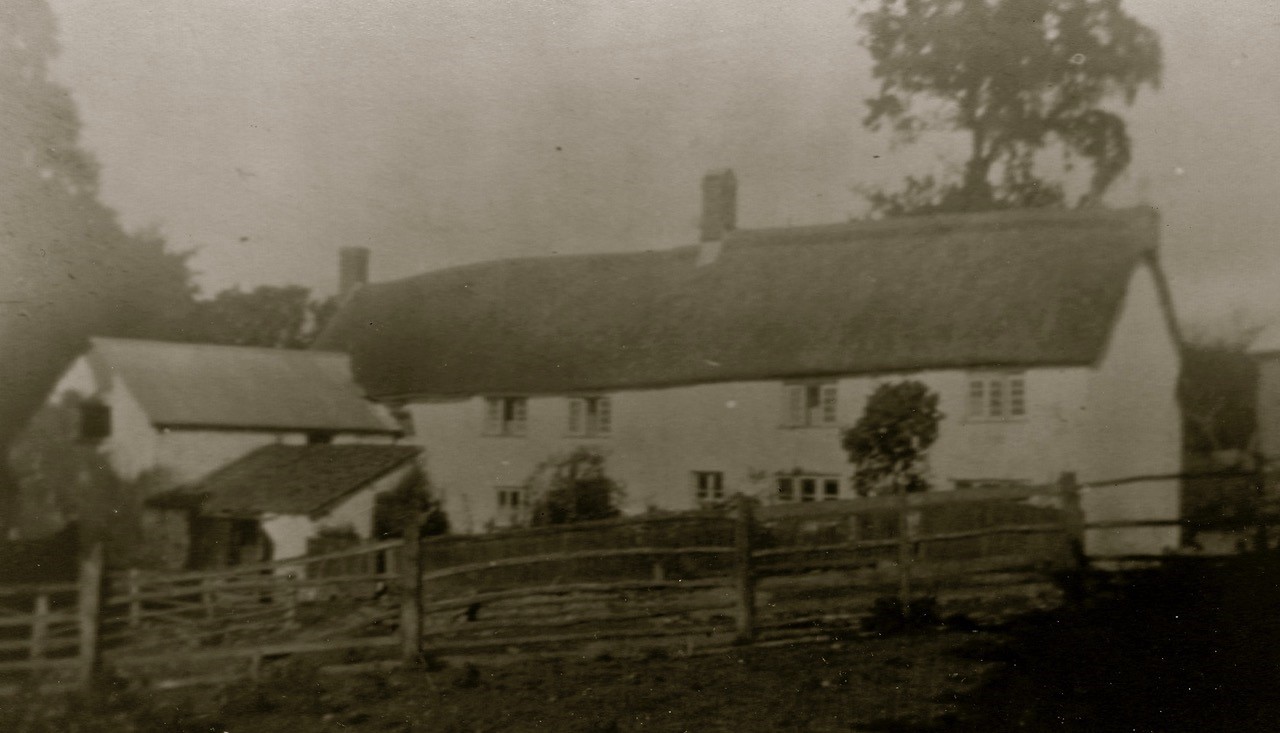Hide
hide
Hide
Honeyford
Parish of Cheriton Bishop, Manor of Lampford
by
Sophia Lambert (2018)
It was called Honeyworthi in the 1330 Subsidy Rolls and has also been spelt Honiford (1656), Honniford, Honeford, Hunniford (1728). According to the Dictionary of Devon place-names it means “Honey Farm”.
This is one of several ancient farms in Cheriton Bishop that were abandoned in the 20th century and have fallen into ruin. Honeyford was situated just south of where the A30 dual carriageway runs, near to the bridge that carries the road west from Four Crossways across the A30. Little remains of it now apart from some dissolving cob covered in brambles. The land that belonged to it has been incorporated into other farms.
Honeyford was in the Manor of Lampford (also written as Lamford or Lamsford or Lambert) that belonged to the Fulford family of Great Fulford in Dunsford. It would always have been rented out for income. It was probably a reasonable sized farm of some 70-80 acres. A Fulford manorial rent-book in the Devon Archives records that in 1598 the tenant was one Edmond Mortimer. 17th century tenants included William Discombe and members of the Davy family.
In the 18th century the Strong family took it on. John Strong was recorded as the churchwarden for “Hunniford” in 1728. The normal practice was for leases to be granted for 99 years or until the death of the last of up to three persons named in the lease, whichever was the earlier. Farmers usually named their sons, and when one of the “lives” died would renegotiate a new 99-year lease, so that effectively families had rolling tenancies and a fair degree of certainty of tenure. In 1751 the trustees of Francis Fulford granted a new lease to John Strong (who was already leasing the farm), “determinable” on the life of John’s son William. The annual rent was nine shillings plus a capon or an extra one shilling at Christmas; and a “heriot” of the farmer’s best beast or £3.6s.8d whenever one of the “lives” mentioned in the lease document died.
The Strongs (who still live in Cheriton Bishop) appear to have moved elsewhere in 1776, as in that year John Fulford granted a 21-year lease to John Bolt, yeoman of Cheriton Bishop, for an annual rent of £38. Under the terms of the lease, John Bolt was required not to plough up any meadowland and the Fulfords retained the rights to timber, hunting, fishing and fowling. There were also various other instructions as to how the land was to be cultivated. A Fulford rent book of about 1798 describes Honeyford as ‘a good farm, houses, 2 barns, shippen, linhays’ with land of 76 ½ acres in hand. It adds that ‘this estate may be greatly improved with advantage’. The Bolts renewed their lease for 14 years in 1800, at an increased rent of £48.
The Fulfords at that time were running into money problems and the Manor of Lampford was heavily mortgaged. To pay off the mortgage, the Fulfords began to sell some of their farms. Some time around 1811-1814, the Fulfords sold Honeyford to John Lambert Gorwyn, a rich yeoman farmer from the nearby farm of Lambert. He subsequently bequeathed Honeyford to his nephew John Lambert Arden. The Lambert Gorwyns/Ardens continued to let out the farm for most of the time, including to a remote poorer relation called William Gorwyn. In 1821, according to the census, William was living there with his wife Ann; their six children aged from 12 down to one; and four apprentices called Hirtzell, aged from 19 down to 9 (they would have been working on the farm), plus an “inmate”, probably a poor relation. The custom of the time was for young apprentices to live very much as part of the family. The farmhouse was a typical cob and thatch Devon long-house with five or six bays and so quite spacious, but it must nevertheless have been quite a squash.

Honeyford farmhouse before it fell into ruin.
The Lambert Gorwyns also owned a farm called Staddon (also about 80 acres and now a ruin), which adjoined Honeyford to the north, and which seems often to have been let with it. At the time of the 1841 census, the farms were in separate tenancies with William Brimblecombe at Honeyford and Daniel Pitts (age 45) at Staddon with his wife Grace and two children. Daniel Pitts was still at Staddon in 1851, but by 1861 had moved to Honeyford. Daniel is described as a farmer of 190 acres employing two labourers and one boy. So it seems likely that he was farming both farms.
Thus began a long association of the Pitts family with Honeyford and Staddon, both of which they probably purchased in the late 19th century from the Lambert Gorwyns. Staddon was obviously the less desirable farmhouse as it was mostly used to house farm labourers. By 1901, according to the census, the two elderly sons of Daniel who had been jointly farming the estate and were now retired had moved to Staddon, thus leaving Honeyford free for one of their own sons. Members of the Pitts family continued to live at Honeyford until after the Second World War.
